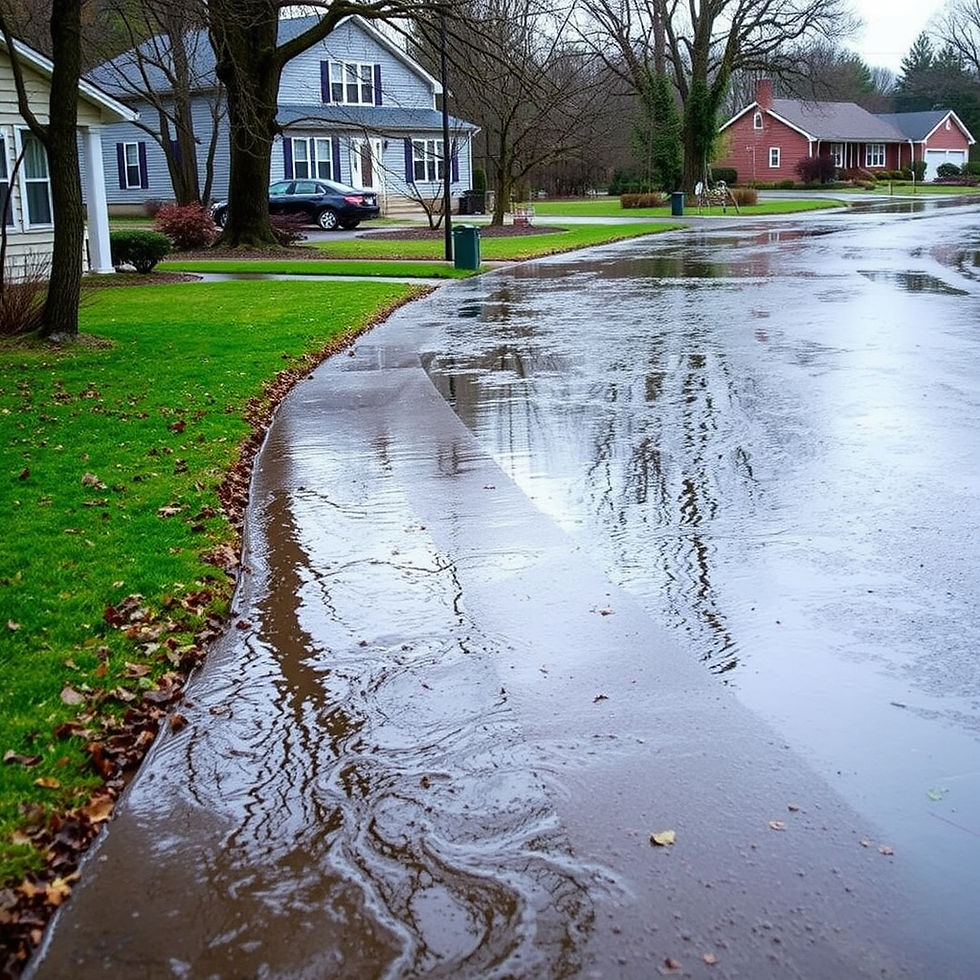How to Keep Your Home Dry and Protected During Heavy Rain
- Jayant Upadhyay
- Apr 16
- 4 min read
Heavy rain can wreak havoc on your home, especially if you live in a flood-prone area. Whether you’re a homeowner or a renter, taking preventive measures can save you from costly repairs and stress down the line. In this blog post, we will explore practical tips on how to keep your home dry and protected during heavy rain, along with product recommendations that can help you stay ahead of the storm.
Understand Your Risks
To effectively protect your home from heavy rain, it’s crucial to understand the specific risks posed by your location. If you live near rivers, lakes, or in a valley, your property may be more vulnerable to flooding. The Federal Emergency Management Agency (FEMA) provides flood zone maps, which can help you determine your risk level.
Additionally, familiarize yourself with the climate in your area. Certain regions experience heavy rainfall seasonally, meaning that being proactive during these months is vital. Watching local weather forecasts can provide early warnings of imminent storms.
Tip: Invest in Flood Insurance
If you find yourself in a flood-prone area, consider investing in flood insurance. Standard homeowners insurance typically doesn't cover flood damage. The National Flood Insurance Program (NFIP) offers policies that can protect your home and belongings from flood damage at a reasonable rate. You can learn more about this insurance at FloodSmart.gov.

Inspect and Maintain Your Gutters
Your gutter system plays a crucial role in directing water away from your home. Clogged gutters can cause water to overflow, leading to leaks, mold, and water damage.
Regular Cleanings
Clean your gutters at least twice a year, especially before the rainy season. Remove leaves, twigs, and debris. If your home is surrounded by trees, you might need to clean them more frequently. Consider using a leaf blower or a garden trowel for this task.
Upgrade Gutter Covers
Invest in gutter covers to minimize debris buildup. These covers will act as a barrier to prevent leaves and debris from entering while still allowing water to flow through. This simple upgrade can save you time and hassle.

Seal Windows and Doors
Unsealed windows and doors can let in water during heavy storms. Inspect the seals and caulking around each window and door for cracks or gaps.
Caulking
If you find any weak spots, reapply caulk. Use a high-quality, waterproof caulk suitable for exterior use. This simple fix can prevent water from seeping in and causing severe damage.
Weather Stripping
Consider adding weather stripping to your doors. This simple and affordable solution tightens the fit, blocks water, and also helps with energy efficiency by keeping your home insulated.
Install a Sump Pump
If your home is prone to flooding, a sump pump can be an invaluable asset. This device removes excess water from your basement or crawl space, preventing major water damage.
Types of Sump Pumps
Submersible Sump Pumps: These are installed underground and can pump out water even during heavy rainfall.
Pedestal Sump Pumps: These sit above the water and are easier to access for maintenance.
Make sure to choose a sump pump with adequate power, considering the size and needs of your space.

Landscaping for Water Management
The way your yard is landscaped can significantly affect how water drains away from your home. Proper landscaping can redirect water away and reduce flooding risk.
Grading
Ensure that the land around your home slopes away from the foundation. If the slope isn’t adequate, consider hiring a professional to re-grade your yard.
Rain Gardens
Look into creating a rain garden to absorb excess rainfall. This involves planting native species in a depressed area of your yard to help capture stormwater.
Drainage Solutions
French drains or surface drains can also help to redirect rainwater away from your home. These are particularly useful if you have heavy clay soils that are slow to drain.
Create an Emergency Plan
It’s essential to have an emergency plan in place before heavy rains hit. This can include everything from knowing evacuation routes to having emergency supplies on hand.
Emergency Kit
Put together an emergency kit that includes:
Flashlights with extra batteries
Non-perishable food and bottled water
A first-aid kit
Essential medications
Important documents in a waterproof container
Family Communication
Make sure all family members know the emergency plan and where to gather in case of severe weather. Discussing the plan ahead of time can help keep everyone calm during a crisis.
Monitor Weather Conditions
During heavy rains, keeping an eye on local weather conditions is crucial. Utilize weather apps or listen to local radio stations for updates. This allows you to remain informed and take action when necessary.
Preparing Ahead
If severe weather is predicted, take precautions like moving furniture to higher ground, securing outdoor items, and checking your sump pump.
Final Thoughts
Heavy rain can be a daunting challenge, but by following these tips, you can help protect your home from water damage. Regular maintenance, proper landscaping, and proactive planning can go a long way in keeping your living space safe. Always be prepared for unexpected weather changes and take the necessary steps to ensure your home stays dry.
Whether you live in a flood-prone area or simply encounter heavy rains from time to time, implementing these strategies can help safeguard your property against water-related issues. Remember, a little preparation goes a long way in keeping your home dry and secure.
By investing in the right tools, monitoring weather updates, and maintaining your property, you can minimize damage and enjoy peace of mind even during the heaviest of rains.



Comments